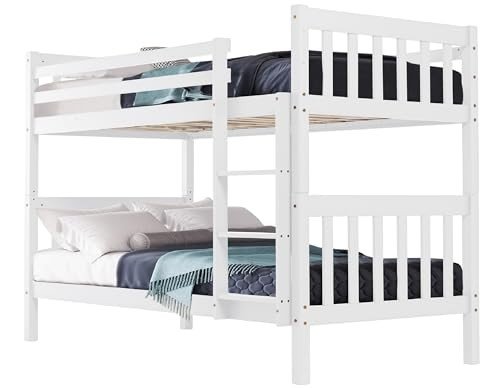Title: The Ultimate Guide to Kids Bunk Beds
Intro
As children grow, so does their requirement for space and storage solutions. Bunk beds are an excellent method to take full advantage of space while providing an enjoyable and practical sleeping plan for your kids. This thorough guide will check out the different types, benefits, safety considerations, and FAQs connected to kids bunk beds.
I. Types of Kids Bunk Beds
- Requirement Bunk Beds: These are the most common type, featuring two twin-sized beds stacked on top of each other.
- Futon Bunk Beds: The bottom bunk is changed with a futon, supplying a couch and a bed in one piece of furniture.
- Twin-Over-Full Bunk Beds: The bottom bunk is bigger, accommodating a full-sized mattress, while the leading bunk is a twin.
- L-Shaped Bunk Beds: These consist of 2 beds positioned perpendicularly, supplying more floor space below.
- Loft Bunk Beds: A single bed is positioned on a raised platform, leaving room for a desk, play location, or storage beneath.
II. Benefits of Kids Bunk Beds
- Space-Saving: Bunk beds are ideal for smaller bed rooms, maximizing floor area for other activities and furniture.
- Fun and Exciting: Children typically enjoy the novelty and experience of going up to their own private sleeping area.
- Cost-Effective: Purchasing one bunk bed is more affordable than buying 2 different beds.
- Versatile: Many bunk beds can be separated into two different beds as children get older or when space enables.
- Built-In Storage: Some bunk beds feature built-in storage solutions, such as drawers, desks, or shelves.
III. Safety Considerations
- Strong Construction: Ensure the bunk bed is made from tough, durable products and has a safe and secure ladder for safe access.
- Correct Spacing: Gaps between the mattress and the frame should be less than 3.5 inches to avoid entrapment.
- Suitable Height: Select a bunk bed with a proper height for your child, considering their age, size, and ability to climb up and down safely.
- Secure Mattresses: Use the proper size mattress and protect it to the bed frame to prevent it from moving throughout sleep.
- Guardrails: Ensure guardrails are set up on both sides of the top bunk and are at least 5 inches greater than the top of the bed mattress.
IV. Frequently asked questions
- What is the perfect age for a child to sleep on the leading bunk?It is typically advised to wait till a child is at least 6 years old before allowing them to sleep on the leading bunk.
- Can bunk beds be separated into 2 different beds?Yes, bunk bed for adults uk can be taken apart and transformed into 2 different beds.
- How much area is required between the bottom of the top bunk and the top of the bottom bunk?A minimum of 2 feet 8 inches is recommended for head clearance on the bottom bunk.
- Are bunk beds safe for children?When properly put together and utilized, bunk beds are safe for children. Always follow security guidelines and ensure your child understands the guidelines for using the bunk bed.
V. Conclusion
Kids bunk beds are a useful and fun option for optimizing space and providing a distinct sleeping experience for your children. By thinking about the different types, advantages, and safety considerations, you can make a notified choice when picking the ideal bunk bed for your family.

